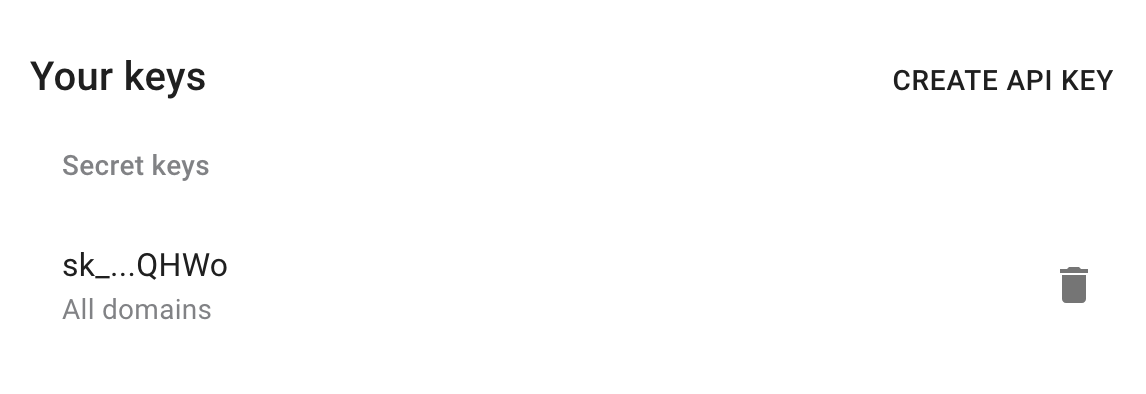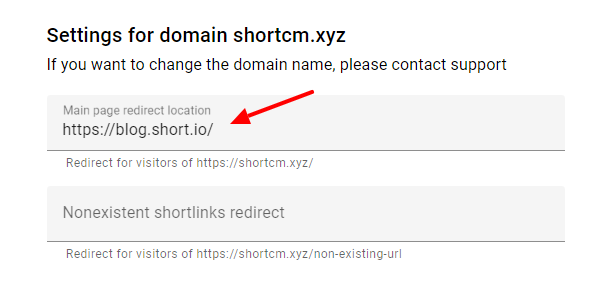Updating a Domain
This method updates a domain on your Short.io account
Information below might be outdated - please visit our recently updated API Reference
The instruction below shows how to update a domain on your Short.io account
1) Get your secret API key here: https://app.short.io/settings/integrations/api-key
- Click "Create API key".
- Add a Secret key.

2) Copy an ID of a domain you want to update.
- Open Domain settings.

- Copy your domain ID.

3) Install prerequisites for requests.
pip install requestsnpm install --save axiosNow everything is ready to run the following snippet. It will update a domain.
4) Create a file: filename.py/ .js/ .rb. The code snippet below updates rootredirect (URL to redirect customers when visiting your short domain).
Please, replace domainID and rootredirect with appropriate values.
import requests
url = "https://api.short.io/domains/settings/domainID/"
import json
payload = json.dumps({"rootRedirect":"your_link"})
headers = {
'accept': "application/json",
'content-type': "application/json",
'authorization': "<<apiKey>>"
}
response = requests.request("POST", url, data=payload, headers=headers)
print(response.text)const axios = require('axios');
const data = {
"rootRedirect":"your_link"
};
const options = {
headers: {
accept: 'application/json',
'content-type': 'application/json',
authorization: '<<apiKey>>'
}
};
axios.post('https://api.short.io/domains/settings/domainID/', data, options)
.then(function (response) {
console.log(response.data);
})
.catch(function (response) {
console.log(response);
});require 'uri'
require 'net/http'
require 'openssl'
require 'json'
url = URI("https://api.short.io/domains/settings/domainID/")
http = Net::HTTP.new(url.host, url.port)
http.use_ssl = true
http.verify_mode = OpenSSL::SSL::VERIFY_NONE
request = Net::HTTP::Post.new(url)
request["accept"] = 'application/json'
request["content-type"] = 'application/json'
request["authorization"] = '<<apiKey>>'
request.body = JSON.generate({"rootRedirect":"your_link"})
response = http.request(request)
puts response.read_body5) Launch the file.
python filename.pynode filename.jsruby filename.rb6) JSON Response (the domain will be updated).
Once you run the code, you will see the response.
{
success: true
}Here's how it looks on Short.io:

Updated 2 months ago
